Advertisers all over the globe are hopping on the native advertising trend, with sales expected to hit an impressive $733,315.8 million by 2035. It's clear that native ads are taking off, especially since they blend so well with the surrounding content. In fact, they capture 53% more attention than traditional display ads and can increase purchase intent by 18%.
The best examples of native ads don’t just stick out like a sore thumb; they’re designed to feel natural and valuable, fitting seamlessly into websites, apps, and other digital platforms. Plus, with new technologies like AI and AR, along with a focus on ethical transparency, these ads continue to evolve in exciting ways.
If you're looking for the perfect native ad example for your campaign, I'm here to help you find it!
Key Takeaways:
- Native advertising seamlessly blends into the content where it appears, making it 53% more engaging than traditional display ads. It boosts purchase intent by 18% and is increasingly becoming a key part of digital marketing strategies.
- Native ads come in many forms, such as in-feed ads, sponsored content, recommendation widgets, and promoted listings. These ads are designed to match the look and feel of the platform, making them less intrusive and more engaging.
- The programmatic integration of native ads, via SmartyAds DSP, allows advertisers to automate ad buying, target specific audiences, and track performance in real-time, maximizing ad efficiency.
- Personalization is key—brands are using advanced data analytics, AR/VR, and voice ads to create more immersive, engaging experiences that resonate with individual users.
- Future trends in native advertising include better contextual targeting, increased transparency, and e-commerce integration, with native ads driving higher conversion rates and engagement.
- SmartyAds DSP helps advertisers create high-performing native ad campaigns, ensuring optimized targeting, better performance metrics, and seamless integration with publisher content.

What is Native Advertising?
The most common definition of native ads is a form of paid media in which the ads fit the look, feel, and function of the media format where they are placed.
While it may seem remarkable, native ads have actually been in existence for nearly a century.
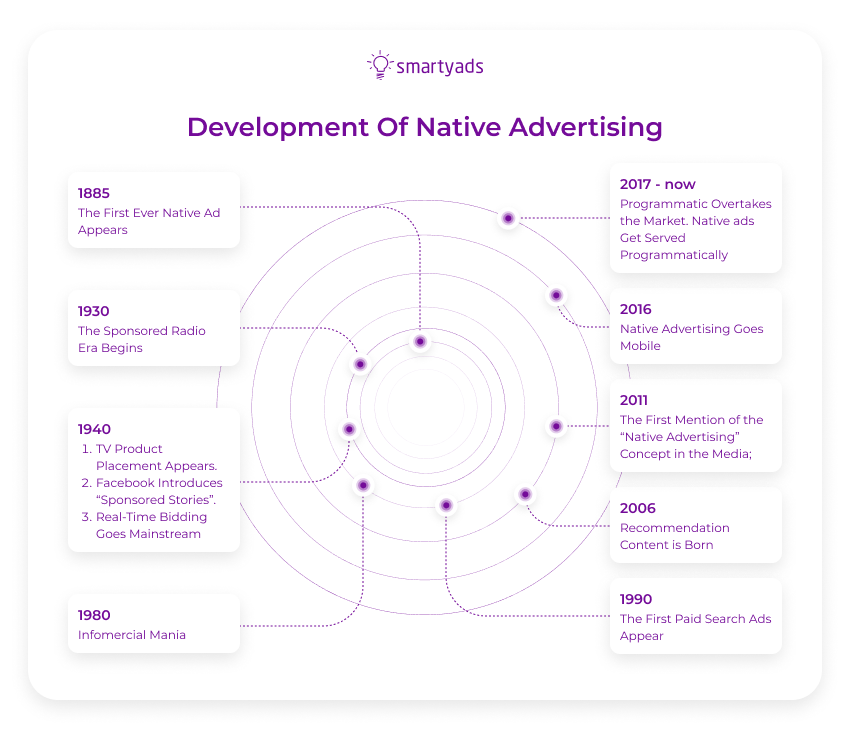
Native ads took time to become genuinely effective. For decades, different companies have used native advertising, experimented, and learned, sometimes surprising the audience with exciting new promotions.
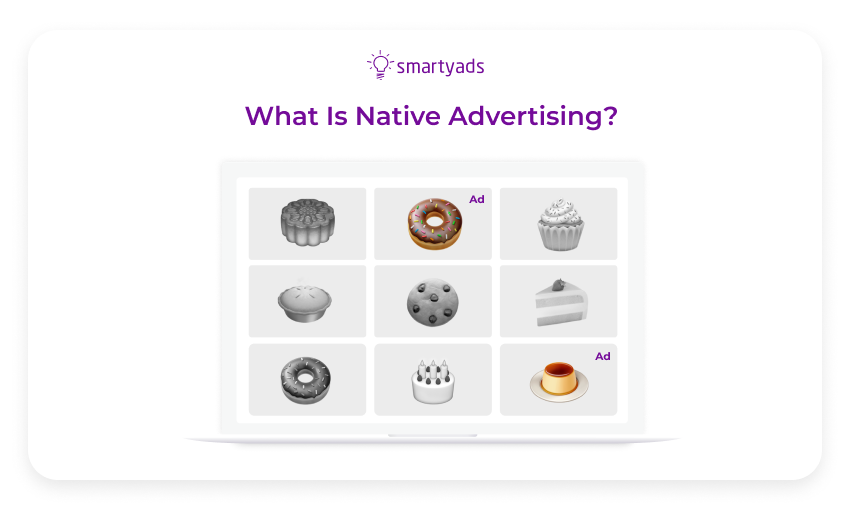
Nowadays, recommended paid content in website widgets, social media posts, news feeds, and even banners has taught how to mimic publisher content's form and function.
That's why, unlike other kinds of ads, native ads is not intrusive for users, so it doesn't cause immunity or blindness as banners do.
Features and Characteristics
Examples of digital native ads can include in-feed units on the website. Plus, native ads can also be disguised as editorial articles, "you may also like" posts on social media, or videos on YouTube.
You can always spot digital advertising content by the following signature characteristics:
- In contextual advertising, such ad formats are typically placed on niche websites to reach the target audience;
- According to the FTC (Federal Trade Commission), it is obligatory for digital native advertising to be appropriately marked to notify the users about the commercial origin of the material;
- Native content always echoes the editorial content of the site;
- Native advertising engages the audience and offers valuable user information that harmoniously complements the resource's overall content, looks, and feels;
- The content always comes first, not the product.
The promotional part shouldn't be obvious; that's why natives typically don't have calls to action.
Why Do You Need Native Advertising?
If your ads aren’t getting noticed, it may be time to reassess your strategy. Native advertising can make a difference because it integrates smoothly with the content users are already experiencing, whether they're on a news site, social media, or browsing search results. Unlike traditional banner ads that get overlooked or blocked, native ads are actually more likely to be engaged with—53% more, in fact! They also encourage 18% higher purchase intent.
For your business, this means:
Increased engagement: Your ads align with the platform's content, leading to more interactions.
Enhanced trust: Native ads tend to be less obtrusive, so audiences respond more favorably.
Greater conversions: By offering valuable content, you guide potential customers closer to purchasing.
It's about connecting in a way that resonates with your audience.
How Native Advertising Works?
Native advertising integrates promotional content into a platform so that it feels like a natural part of the experience. By matching the style and format of the surrounding material, it becomes less of a distraction for users. Advertisers focus on delivering relevant ads using formats such as in-feed posts, sponsored articles, and recommendation widgets. This method enhances user experience while effectively raising brand awareness and encouraging engagement.
Want to see native display ads example that generates high CPM? Most formats, e.g., content recommendation widgets, social media ads, and news feeds, can produce a high CTR.
Still, engaging online advertising creatives will play a significant role since native promotion is delicate and works hand-in-hand with good content.
- People watch natives 53% more often than banners. You can find out why here;
- This format produced $58,608 in attributable revenue for Magoosh Online Test;
- Native ads that contain rich media can elevate conversion to 60%;
- 32% of people who watched native ads are willing to share them with others (in contrast to only 19% of 'sharers' who watched banner ads);
- Native content can drive 40 times higher CTR than other formats;
- Native ads show the highest click-through rates (1%) in categories like pets, food, drink, family, travel, and technology.
Creating Ads: Digital Implementation
Programmatic native ad examples featured above can serve as a basis for crafting your own digital marketing strategy. Sizes and resolutions of native advertising formats are almost limitless, and the performance rates of these ads are among the highest across the industry.
For the advertiser who strives to create an efficient native advertising campaign, it is important to evaluate a bunch of native ad placement aspects beforehand:
- Form: How exactly the native ad will fit the website's design? Where are the viewers active the most, in-stream or out-stream?
- Function/Integration: Is the native ad able to function the same way as the other website elements on the page where it is placed?
- Targeting/Buying: Where do you plan to place the ad: is there a specially designated section on the website you plan to target? If so, how do you plan to target such?
- Measuring results: Since the performance of native advertising is measurable, how do you plan to derive analytics? Which indicators will you apply?
Let's look at the effective native ads examples perfect for the best native platforms in 2023.
Types of Native Advertising
Recommendation Widgets
Often labeled as “You might also like” or “Recommended for you,” these ads suggest additional content based on user behavior and preferences. They are typically placed at the end of articles or alongside videos, providing a non-disruptive way to drive traffic to promoted content.
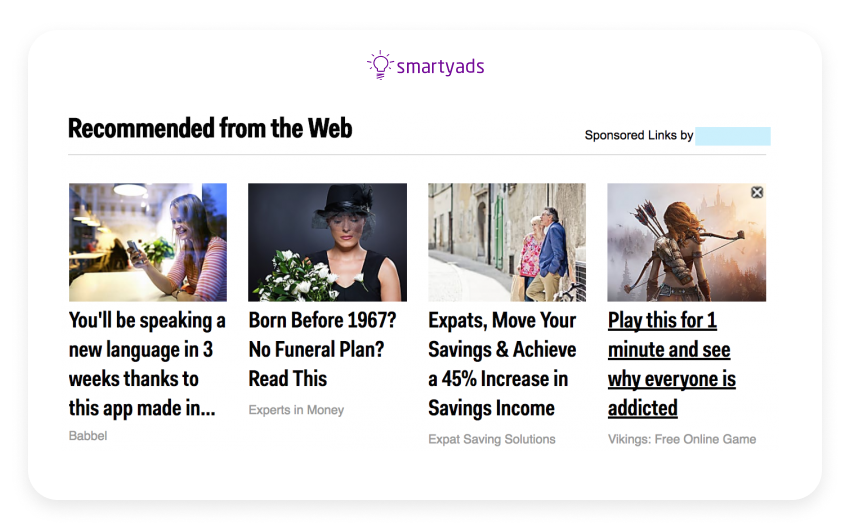
"Recommended" native advertising is very beneficial because it allows advertisers to pay for the click/visit and expect an ad to be shared through various resources.
These suggestions, in the majority of cases, are recommended ad units that redirect users to the other sources where promoted materials are placed. Still, ad recommendation blocks are often ranked among actual publishers' content to ensure a good quality user experience.
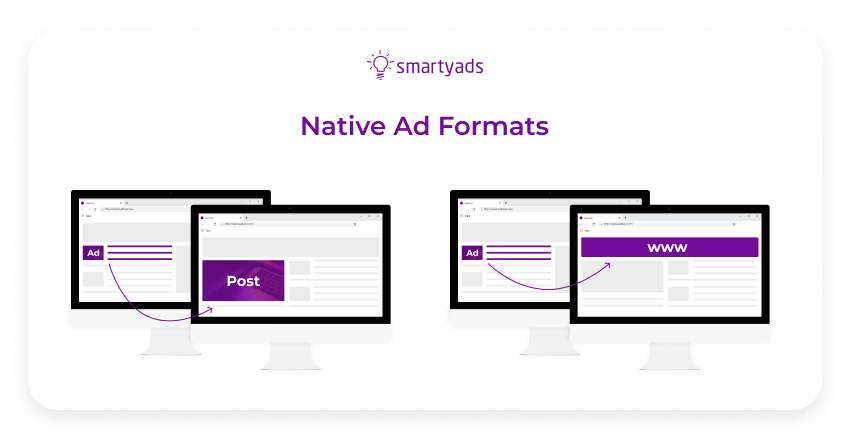
Located at the bottom of articles like photos, or videos that match the subject, these ads can be personalized and served according to the interests of each particular user.
The programmatic native advertising examples below exemplify how these widgets can be successfully implemented, e.g., on entertainment niche websites. Since programmatic advertising also targets the ad message according to the user data, it becomes possible to target only specific users and serve them relevant ads according to their characteristics (age, gender, geo, language, interests, etc.).
Moreover, ads placed in these widgets can be measured by the level of user engagement — views, number of shares, likes, and general on-page time.

In-feed Ads
Native campaign examples featured below can perform well in various ecosystems, including mobile and in-app. In-feed native advertisements are placed on the website's feed; they match the feed's appearance.
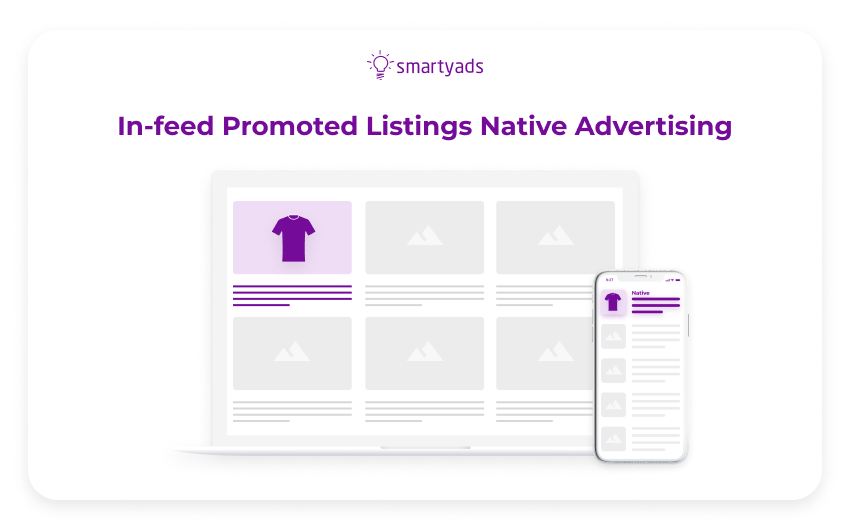
These types of native ads appear naturally within a website’s or app’s content feed, blending seamlessly with the surrounding content. They can link to internal editorial pages or external brand sites, ensuring a smooth user experience while promoting products or services.
Promoted Listings
Common on e-commerce platforms like Amazon and eBay, promoted listings highlight sponsored products within search results or category pages. Since these ads appear alongside organic listings, they enhance visibility while maintaining a natural shopping experience increasing conversions.
In-Feed Social Native Ads
These are standard ad placements enriched with contextually relevant content, such as product reviews, testimonials, or influencer insights. By blending promotional messaging with valuable information, these ads build credibility and encourage user engagement without feeling overly sales-driven.
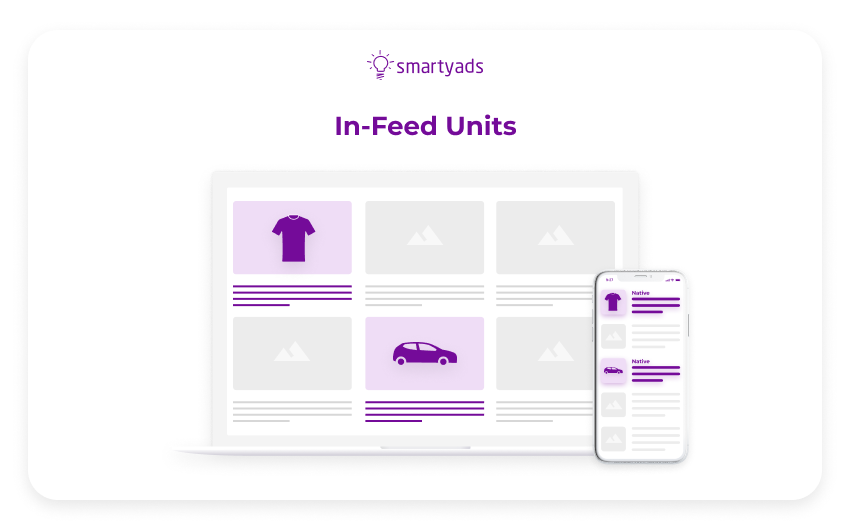
Sponsored or Branded Content
Sponsored content is the product of an agreement between the publisher and advertiser about generating and posting a certain number of articles during the period. The publisher promotes the advertiser's brand by creating the branded content and receiving remuneration for this. In certain cases, advertisers create content independently without relying on the publisher.
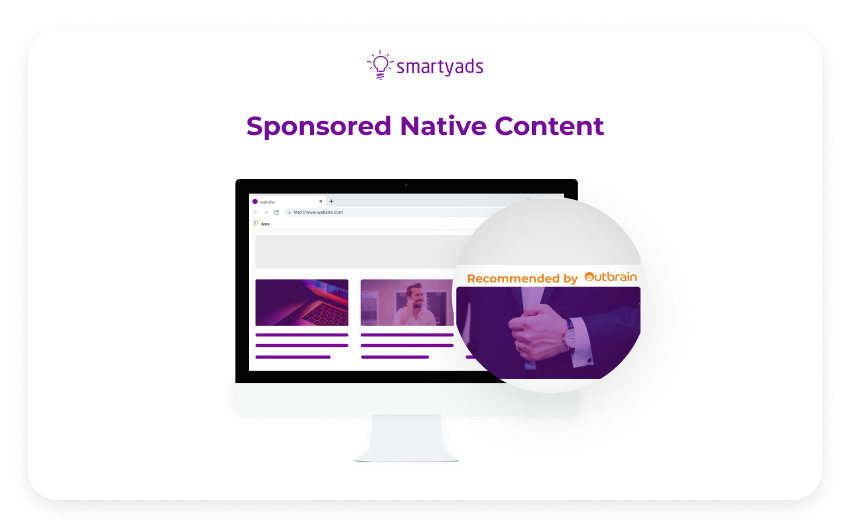
Some advertisers believe that sponsored stories are the ad type that corresponds to the native advertising definition as it helps achieve the most natural, non-sales feel.
Search Ads
Below, you can see native advertising examples in search results. When the user queries, these advertising snippets appear in search engines like Google or Bing.
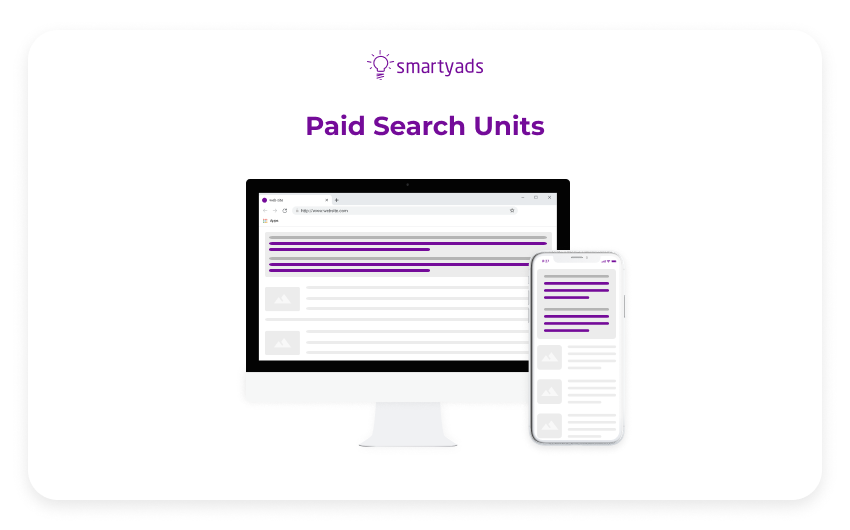
Displayed at the top of search engine results pages, these ads closely resemble organic search listings, making them less intrusive and more engaging. They are highly effective for brands looking to capture users at the moment they are actively searching for related products or services.
These ads will work great for those advertisers that implement location-based content marketing campaigns and strive to hit users at the very moment when they search for products and services.
Custom Integrations
These ads are highly tailored to fit a platform’s specific environment, often including interactive features, AR/VR experiences, or branded content collaborations. They offer an immersive way for advertisers to engage users while maintaining the authenticity of the platform’s native experience.
In-Game Ads
These ads appear seamlessly within video games, integrating into the gaming environment as billboards, branded items, or interactive experiences. They enhance brand visibility without disrupting gameplay and can be dynamically updated based on user data and location.
In-Map Content
Brands can place native ads within digital maps, such as Google Maps or Waze, where businesses appear as promoted locations. These ads help drive foot traffic by displaying offers, discounts, or navigation prompts to nearby users actively searching for services.
Audio Native Ads
Integrated within streaming platforms like Spotify or podcasts, these ads match the tone and format of the content, making them feel less intrusive. They often include host-read sponsorships or dynamically inserted promotional messages tailored to the listener’s preferences.
Programmatic Placement: The Power Of Personalization
Native advertising and programmatic can work very effectively together. Such a strategy combines the advantages of both advertising approaches. The advertiser gets the opportunity to show ads organically fitted into the site.
Native ads will be shown only to users whose characteristics are most suitable for serving impressions: geo, gender, age, interests, and other criteria.
Still, even though each impression will be tailored to the particular user, the purchase of native advertisement placement will be automated, and the campaign itself will be optimized in real time.
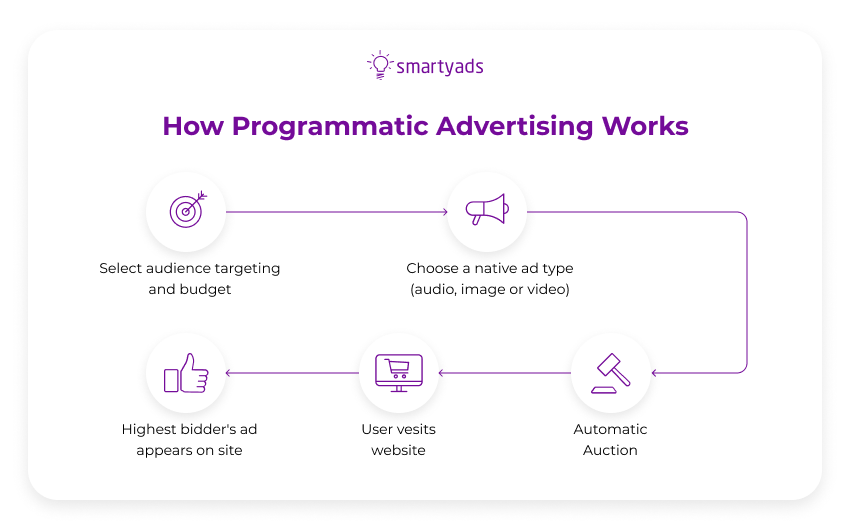
It seems complex, but here's how native advertising works if implemented programmatically: the advertisers can access a great variety of publishers registering at the demand-side platform (DSP) that interacts with the supply-side platform (SSP represents publishers) and various native ad networks.
DSP automates the process of ad buying in a matter of seconds and performs purchasing on behalf of the media buyer. The benefits of native advertising purchasing through automated platforms are apparent, apart from predefining how future placement should look.
DSP platforms like SmartyAds enable advertisers to target specific websites with audiences most valuable for the advertiser.
There's a way to define native advertising’s effectiveness to ensure that this or that native ad type goes along with your content marketing campaign.
On DSP, you can easily track how eCPMs change during the selected timeline and track impressions, conversions, daily/monthly spending, and other performance indicators.
Future of Native Advertising
The native advertising scene is shifting quickly due to technological innovations and how consumers are engaging with content. Here are some notable trends that are taking shape:
1. Enhanced Personalization
Brands are using data analytics to create native ads that resonate with individual users. This approach helps increase engagement, with personalized ads showing click-through rates up to 60% higher.
2. Integration of Augmented Reality and Virtual Reality
The use of AR and VR in native advertising is allowing for more immersive experiences. Brands are developing interactive ads that enable customers to engage with products virtually. This is particularly effective in retail, where virtual try-ons have contributed to a 30% rise in conversion rates.
3. Growth of Audio and Voice Ads
As smart speakers and podcasts gain popularity, audio and voice-based ads are becoming more common. These ads offer a subtle way to reach audiences, and studies indicate that 70% of podcast listeners have made purchases after hearing about products in podcasts.
4. Advanced Measurement Metrics
Advertisers are moving away from traditional metrics like click-through rates to more meaningful engagement analytics, such as time spent on content and social shares. This shift helps refine campaign strategies, with brands that adopt these metrics seeing a 25% improvement in performance.
5. Increased Transparency and Regulation
With consumers becoming more aware of sponsored content, there’s a demand for clear labeling in native advertising. Stricter regulatory guidelines are being implemented, promoting trust between consumers and brands. Compliance with these guidelines can enhance a brand's credibility.
6. E-commerce Integration
Native ads are increasingly incorporating shopping features, allowing consumers to make purchases without leaving the content they're engaging with. This seamless experience is resulting in higher conversion rates, with some brands experiencing a 20% increase in sales through shoppable ads.
7. Contextual Targeting
In response to privacy concerns, advertisers are embracing contextual targeting. This approach delivers ads based on the content a user is currently engaging with instead of using personal data. This method respects user privacy while providing relevant advertising, leading to a 43% higher click-through rate compared to non-targeted ads.
These trends indicate a transition towards more personalized and transparent native advertising strategies that align with consumer expectations and technological developments.
To Sum Up
If you examine the examples of native advertising we've highlighted, you'll notice a common theme. Programmatic advertising platforms, like DSPs, allow advertisers to easily launch native campaigns across a wide array of websites worldwide.
Meanwhile, publishers can incorporate these ads into their content using SSPs, enabling them to monetize their space without bothering their dedicated readers.
At SmartyAds, we know how to leverage the best native ads effectively, and we believe you can do the same.
Consider signing in to SmartyAds DSP to explore your options.

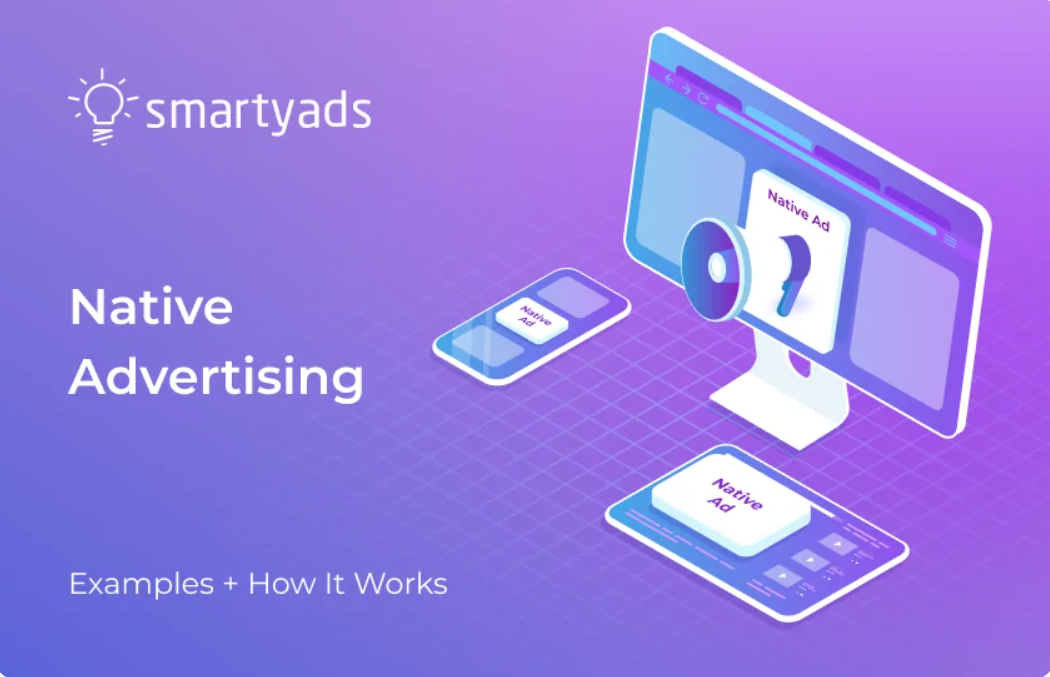
.webp)


